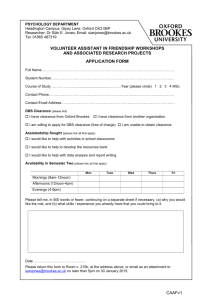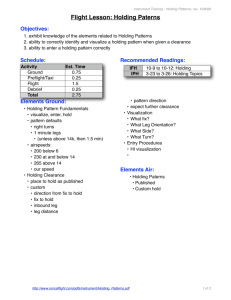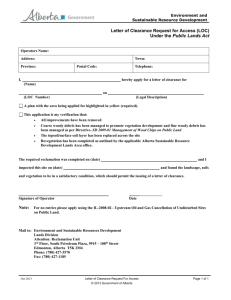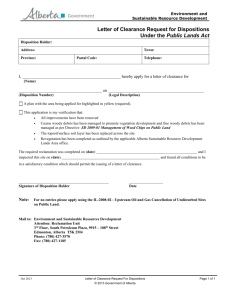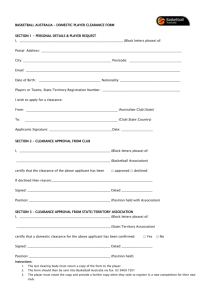CLEARANCE DELIVERY
advertisement
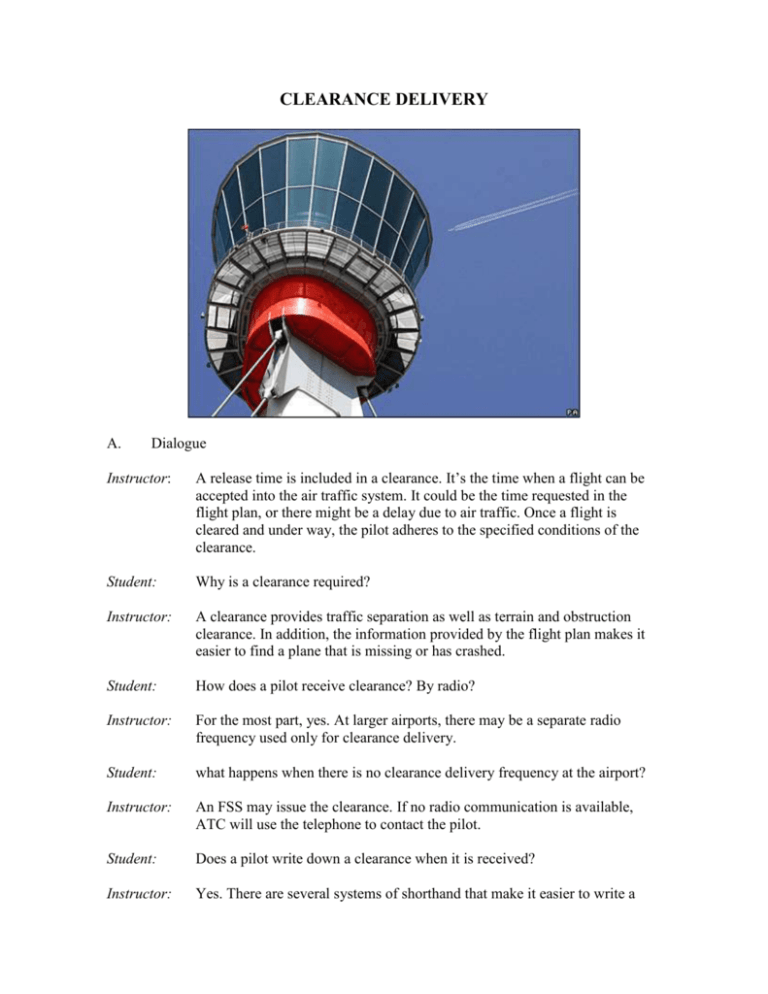
CLEARANCE DELIVERY A. Dialogue Instructor: A release time is included in a clearance. It’s the time when a flight can be accepted into the air traffic system. It could be the time requested in the flight plan, or there might be a delay due to air traffic. Once a flight is cleared and under way, the pilot adheres to the specified conditions of the clearance. Student: Why is a clearance required? Instructor: A clearance provides traffic separation as well as terrain and obstruction clearance. In addition, the information provided by the flight plan makes it easier to find a plane that is missing or has crashed. Student: How does a pilot receive clearance? By radio? Instructor: For the most part, yes. At larger airports, there may be a separate radio frequency used only for clearance delivery. Student: what happens when there is no clearance delivery frequency at the airport? Instructor: An FSS may issue the clearance. If no radio communication is available, ATC will use the telephone to contact the pilot. Student: Does a pilot write down a clearance when it is received? Instructor: Yes. There are several systems of shorthand that make it easier to write a clearance quickly and accurately. Student: Does ATC always issue a clearance for the entire flight plan? Instructor: Sometimes ATC may issue a clearance to a fix. This happens when the airway is congested. An expect further clearance time (EFC) will also be included. Student: What happens if the plane reaches the fix before receiving a clearance to proceed? Instructor: The pilot flies in a holding pattern until clearance is received. Student: Can a clearance be changed once the plane is airborne? Instructor: Yes, that procedure is similar to filing a flight plan in the air. B Clearance Shorthand Above After Airport Alternate instructions Before Below Clearance void after Climb and maintain Cross Cross airways Cruise Descend and maintain Expect approach clearance at... Expect further clearance Hold (direction) Join or intercept airway Left turn Maintain Range Remain at or above restriction Remain at or below restriction + < A ( > ) + V< ↑ X ≠ → ↓ EAC (time) EFC H (direction) = LT M R altitude _______ altitude C. Report leaving Report passing Report reaching Right turn Takeoff direction Air Traffic control clears Until While on airway RL RP RR RT T → (direction) C / = Terminology Practice clearance delivery: an ATC service that transmits flight clearances - the IFR clearance is transmitted by clearance delivery. - the co-pilot contacted clearance delivery. - does this airport have a special frequency assigned to clearance delivery? expect further clearance (EFC): the time when an additional clearance will be issued - the aircraft is in a holding pattern with an EFC of 2143 GMT. - When do you estimate our EFC? - Our EFC is 1654 GMT. fix: a geographical position determined by reference to one or more navigational aids. - notify ATC when we pass the next fix. - what time did we pass the last fix? - we must enter a holding pattern at the next fix. holding pattern: the oval course flown by an aircraft awaiting clearance to land - how long will we remain in the holding pattern? - we can expect to leave the holding pattern in ten minutes. - the airport is very busy, so we’ll have to fly in a holding pattern. release time: the departure time issued by the ATC - how long do we have to wait for the release time? - when the release time arrives, ATC will clear the aircraft for takeoff. - your release time is 2134Z. D. CHECK-UP Match the terms on the left with the abbreviations on the right. 1. after a. LT 2. below b. ≠ 3. climb and maintain c. RR 4. cross airways d. M 5. expect further clearance time e. + 6. left turn f. RL 7. maintain g. < 8. report leaving h. / 9. report reaching i. EFC 10. until j. ↑ *********
